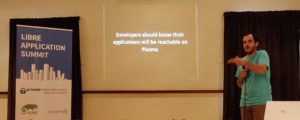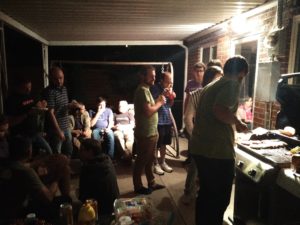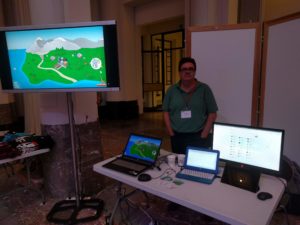One of the activities that we have been promoting is joining conferences on topics that we’re interested in. Last September I joined two of them: the Libre Application Summit and EduCode.
Reaching out within the community
In the Linux community we’re portrayed as tribalistic quite often, there’s good reasons of that. Having been part of KDE day to day for years, I also must say that it’s clearly been blown out of proportion. There’s collaboration all over the place and we should celebrate when it happens. Sitting together and sharing visions is useful, which we did in the last Libre Application Summit in Denver.
Among others, we learned about Flatpak’s internals, elementary’s software distribution approach, fancy new ways of distributing linux operating systems and how some free software we have available on linux can be used by graphics designers and how they reach them. Of course, there were the KDE bits that Albert and I brought.
I would say that the ultimate goal for all this wasn’t exclusively to learn about it but to actually sit together and talk. Which we did and I’m looking forward to do so again next year, hopefully with the rest of communities working on desktop, applications and distribution.
Reaching out to users
It’s a completely different story, for sure, but it needs doing too. In this occasion we joined a conference full of Belgian and French teachers who are interested both in Free Software and having the best educational tools available for their students.
This is especially important for two main reasons: we get to explain to some of our most prominent stakeholders what our software does and why it’s great but also we get to see how they react and what they miss. Caring and listening to users is crucial to the health of any project.
I was tempted to upload another picture of the crew up there (Adriaan, Paul and myself) but it’s rather unflattering to say the least, so we’ll stick with Paul looking all smart. 🙂
Of course, these were only the conferences I attended the last few months, but there’s been several other conferences where KDE has joined, join the planet KDE to know more!











